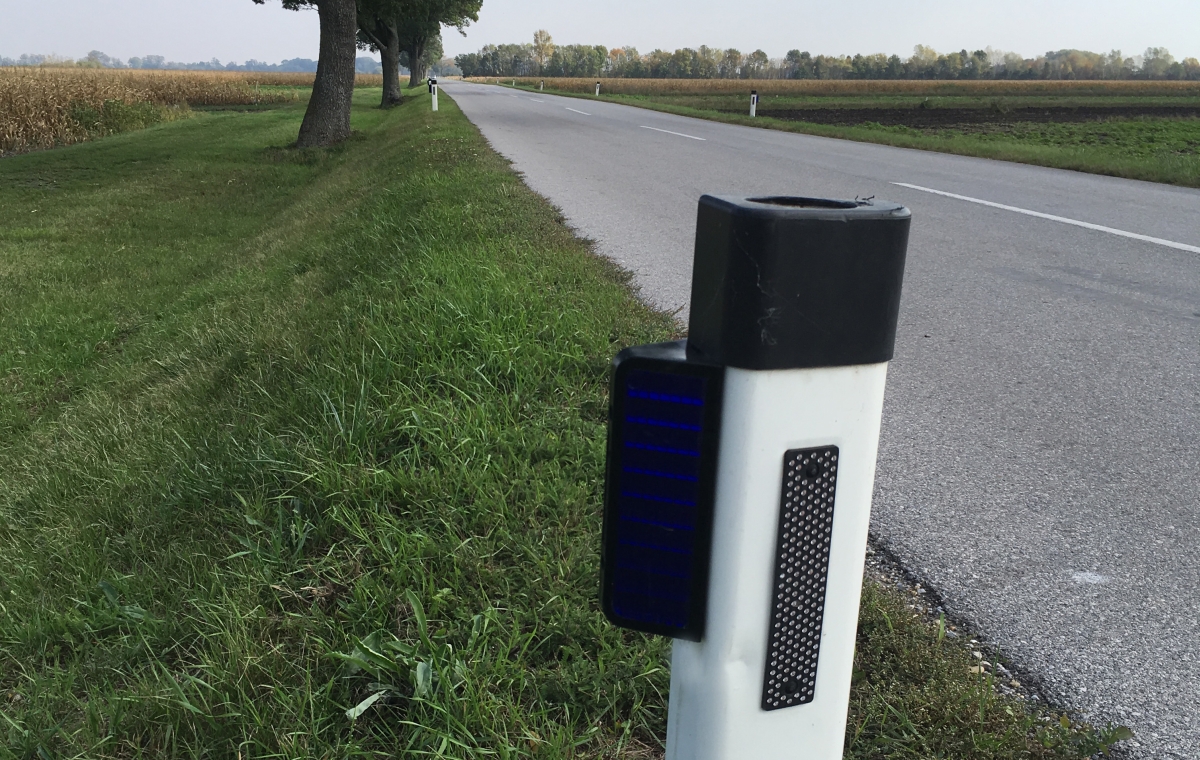Wildlife Control 4.0 Networks
Status quo: Vehicle wildlife collisions are a big challenge in today’s road and train transport networks. Whereas the overall number of road accidents in Europe is decreasing, because of positive safety developments for vehicles and for the road infrastructure, the numbers of vehicle wildlife collisions still increases. Also, in rail transport the experiences in several EU countries show that service interruptions and delay related payments to customers increase because of frequent vehicle wildlife collision. In Austria the negative road safety trend has remarkably been inverted.
Problem statement: Passive reflectors have shown a reduction of vehicle wildlife collisions in everyday traffic environments of up to 25%, but their impact sharply decreases with vehicle speeds above 60 km/h. For this reason, passive reflectors are not regularly used in rail networks. Active reflectors show an improved rate between 50 and 80 % of collisions reduction for vehicle speeds up to 100 km/h depending from sensor range, visibility conditions and other parameters. In rail networks, also active reflectors still have their technical limitations and are currently therefore only used in R&D environments but have the potential to reduce vehicle collisions up to 95 %. To achieve this, the wildlife needs to be alerted reliably and well in advance from approaching trains or vehicles also on twisting infrastructure stretches with the link to a trigger and activating the warnings with a wireless network signal.
Project scope and innovations: This project delivers an optimized wildlife warner for existing traffic environments and makes it possible to address wildlife vehicle collisions in new infrastructure areas (e.g. motorway sections with high vehicle speeds, railway segments). Key factors for success are the high percentage rate of avoiding collisions and easy installation and maintenance for the warning devices with excellent cost performance ratio in rough transport environments. In the course of the project work, the experts at AIT develop a mobile measurement laboratory for passive and active devices, which makes it possible for the first time to subject the available devices to an objective test.
Results and learnings: This project delivers an assessment of passive and active wildlife warning devices on the market, based on a measurement procedure, an extensive testing and validation of wildlife warning devices in two test phases of nine months each for road and rail infrastructure segments, and a wireless network solution for future transport infrastructures and their cost-efficient operation.
Funded by the Federal Ministry for Climate Protection, Environment, Energy, Mobility, Innovation and Technology (BMK) and the Austrian Research Promotion Agency (FFG) within the programme "Mobility of the Future" - Transport Infrastructure Research R&D Services - 6th call (VIF2016).





